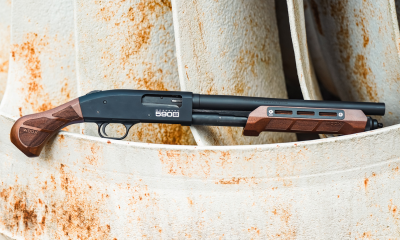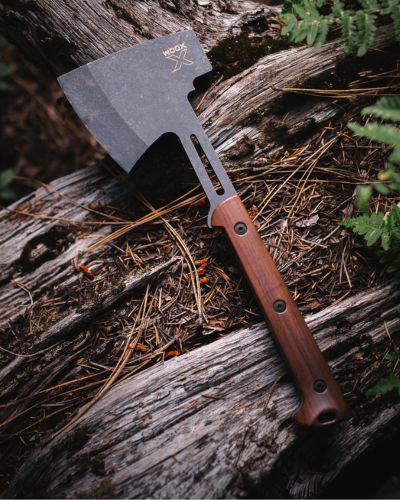
Light vs. Heavy Rifle Stocks: A Shooter's Guide to Making the Right Choice
Table of Contents
When selecting a rifle stock, understanding when to opt for a light or heavy variant is crucial, depending on your shooting requirements and preferences. Here's an article to guide you through the decision-making process, focusing first on when to use a light rifle stock and then when a heavy rifle stock is more appropriate.

When to Choose a Light Stock
1. Hunting:
Movement and Tracking: A light rifle stock is ideal for hunting scenarios involving a lot of movement or long-distance tracking. Its reduced weight makes the rifle easier to carry, a significant advantage for hunters who traverse large areas on
foot.
2. Tactical Use:
Mobility and Speed: In tactical situations where quick maneuvering and speed are essential, a light rifle stock is advantageous. It ensures easier handling and carrying for extended periods, vital in dynamic tactical environments.
3. Recreational Shooting:
Casual Shooting and Beginners: For casual shooters or beginners, a light rifle stock makes the rifle less cumbersome, enhancing the overall shooting experience during extended sessions.
4. Environmental Considerations:
Rugged Terrains: In diverse and rugged terrains, carrying a heavier rifle can be challenging, making a light rifle stock a practical choice.

When to Choose a Heavy Rifle Stock
1. Hunting:
Stationary Hunting: For hunters who remain in a blind or a fixed position, a heavy rifle stock aids in stabilizing the rifle for more precise, long-range shots.
2. Competitive Shooting:
Long-Range Accuracy Competitions: In competitions focusing on long-range targets, the weight of a heavy rifle stock helps reduce recoil and stabilize the shooter's aim, which is critical for hitting distant targets accurately.
3. Tactical Use (Specific Scenarios):
Stationary Defensive Positions: In situations where long-range accuracy and reduced recoil take precedence over mobility, a heavy rifle stock is suitable.
4. Long-Range Shooting:
Stability and Precision: For long-range shooting, a heavy rifle stock is highly recommended. Its added weight offers the necessary stability, crucial for maintaining accuracy over long distances.
5. Environmental Considerations:
Stable, Flat Terrains: When shooting in stable or flat terrains, or from a fixed position, a heavy rifle stock is more advantageous due to its ability to aid in steady and precise shooting.

why heavy stock are more precise
| Advantage | Description |
|---|---|
| Stability | The additional weight of a heavy stock helps stabilize the rifle, particularly beneficial for long-range shooting as it minimizes the rifle's movement and sway. |
| Recoil Management | Heavier stocks absorb recoil more effectively than lighter ones, reducing the felt recoil and allowing for better control over the rifle and more accurate follow-up shots. |
| Reduced Fatigue | The extra weight of a heavier rifle can reduce shooter fatigue in a shooting position, as less effort is needed to hold the rifle steady compared to a lighter rifle. |
| Harmonic Dampening | Heavier stocks can dampen barrel harmonics, reducing the vibrations that occur when a gun is fired, which leads to more consistent shot placement. |
| Better Fit and Customization | Heavy stocks often offer more customization options, like adjustable cheek risers and length of pull, allowing for a better fit that improves accuracy and shooting comfort. |

The Influence of Material on Rifle Stock Weight
Rifle stock materials vary in weight, and they can be ranked from lighter to heavier as follows:
Synthetic (Plastic, Fiberglass, Carbon Fiber, etc.):
- Plastic: Often the lightest, used in many modern and budget-friendly firearms.
- Fiberglass: Slightly heavier than plastic but still on the lighter side, offering a good balance of weight and durability.
- Carbon Fiber: Known for its strength-to-weight ratio; it's light like plastic but much stronger, often used in high-end or specialized rifles.
Wood (Different Types):
- Softwoods (like Poplar): Generally lighter among wood options, but less common in rifle stocks due to lower durability.
- Hardwoods (like Walnut, Maple, Oak): More common in traditional rifle stocks; they are heavier than softwoods and most synthetic materials but offer a classic aesthetic and feel.
- Laminated Wood:
Layers of wood veneers are glued together; heavier than standard wood stocks. Laminated stocks are very strong and resistant to environmental factors, contributing to their weight.
Metal (Aluminum, Steel Components):
- Aluminum: Used in some tactical and precision rifle stocks, heavier than wood and most synthetics.
- Steel Components: Sometimes used in certain stock designs for added weight and balance; these are among the heaviest options.
why woox chassis are groundbreaking

WOOX has revolutionized the design of rifle stocks by breaking the traditional tradeoff between lightness and precision. They achieved this by ingeniously blending the natural characteristics of wood with the technical prowess of Aircraft grade aluminum.
Wood,known for its lightness, excellent harmonic dampening properties, and ergonomic comfort, forms the core of the stock. This choice ensures that the stock remains lightweight and comfortable to handle, while also effectively reducing the vibrations that can affect shot accuracy.
Complementing the wood is Aircraft-grade aluminum, a high-strength alloy renowned for its stability and recoil management capabilities. The incorporation of Ergal aluminum enhances the stock's overall structural integrity, significantly improving its ability to absorb and manage recoil.
This innovative combination of materials results in a rifle stock that offers the best of both worlds: the lightweight, comfortable handling of wood, and the stability and recoil control of metal.
WOOX's approach provides shooters with a stock that doesn't compromise on either precision or ease of use, effectively redefining the standards for rifle stock design.

The choice between a light and heavy rifle stock hinges on the specific needs of the shooting activity. Light stocks are better for scenarios demanding mobility and versatility, while heavy stocks are favored for situations where precision and stability are paramount. Ultimately, the decision should align with the shooter's individual needs and the particular demands of their shooting environment
SHOP BY purpose
Discover the perfect fit for your needs with our diverse collection of aftermarket stocks, tailored for a range of different purposes.
see all our stocksKeep Reading

Tikka T3x Hunter 16″ with WOOX Cobra Precision Build
A purpose-driven rifle system blending craftsmanship, precision, and performance—the WOOX Cobra + Tikka T3x Hunter 16″ build is made for the modern outdoorsman.

The Mossberg Maverick 88: A Working-Man’s Shotgun Raised to a Higher Calling
The Mossberg Maverick 88 evolves from rugged workhorse to heirloom-quality shotgun with Gladiatore walnut and aluminum furniture—performance and craftsmanship combined.

PSAK-47 GF3 & WOOX Forty Seven: Power Meets Heritage
The WOOX Forty Seven combines timeless craftsmanship and thoughtful design, creating an immersive, adventure-ready experience for those who seek the wilderness.

PTR 9CT: Stock, Grip & Rail Upgrades - WOOX 1913 WOODY
WOOX’s handcrafted American walnut stock, M‑LOK vertical grip and rail panels turn any rifle into a blend of classic craftsmanship and modern modular performance — perfect for hunters and shooters who value both heritage and function.
build your stock
Easily customize your rear stock for the perfect look, select recoil pads for optimized comfort, engrave personal touches, and choose forends to suit your shooting style.
Your rifle, your rules.
























